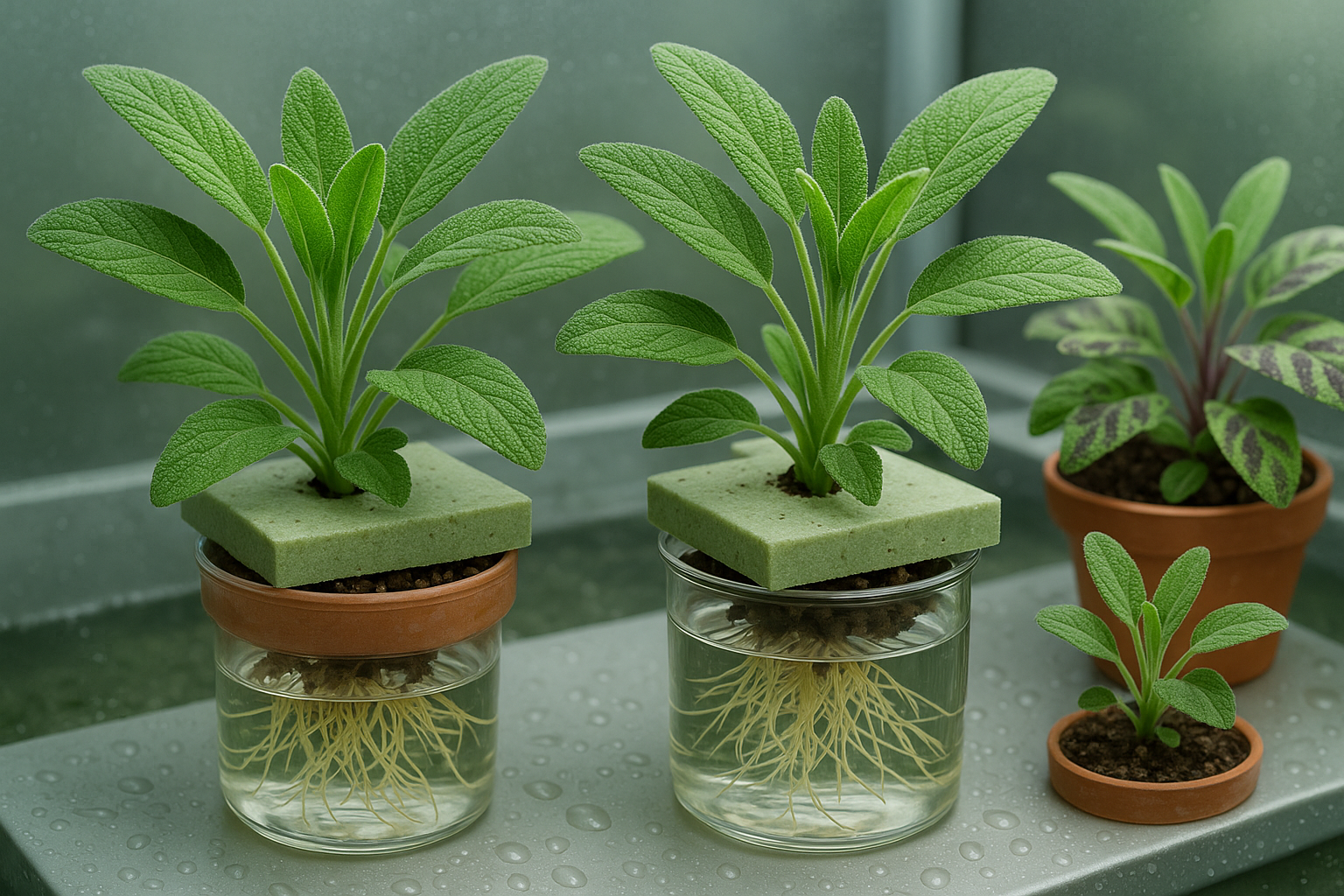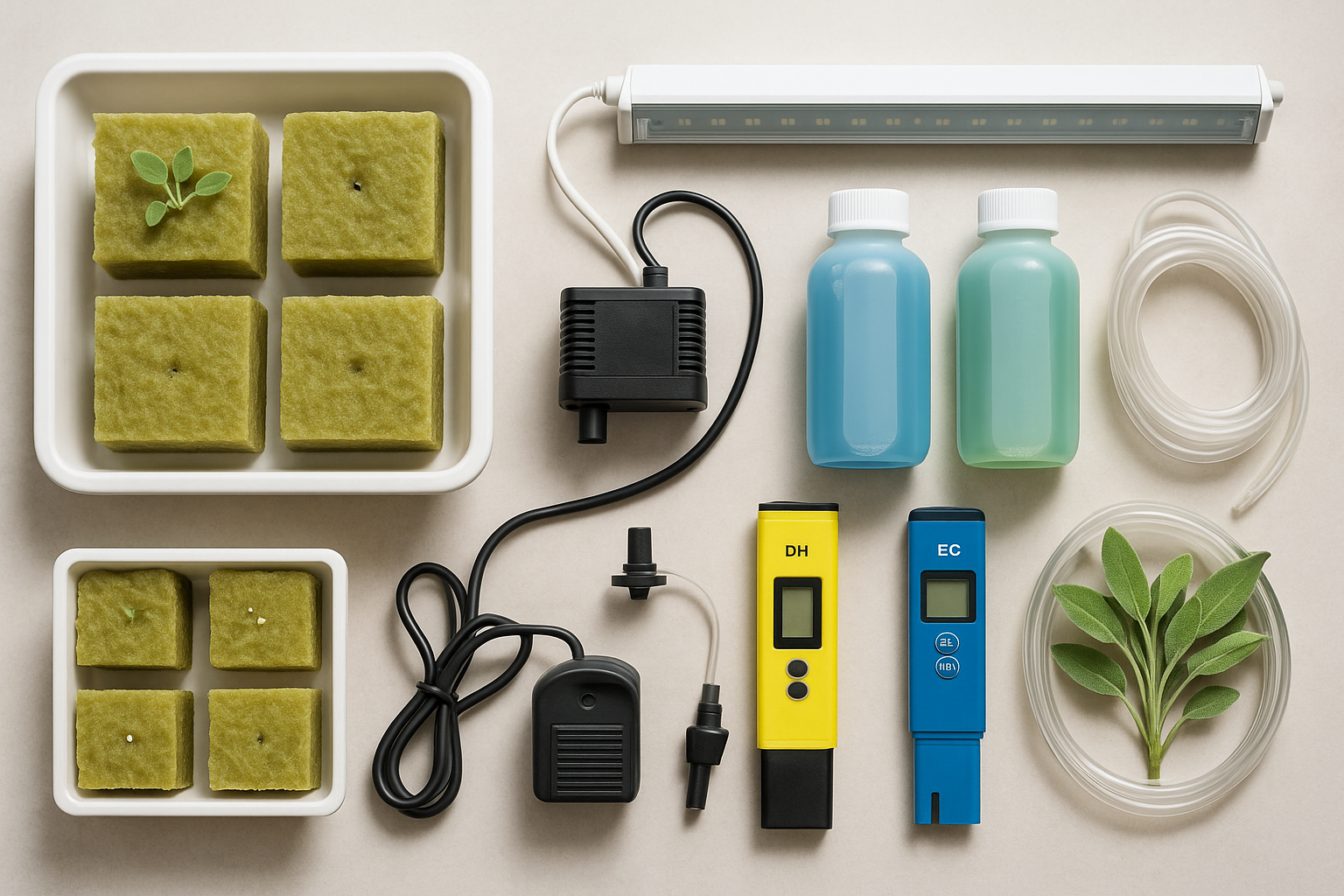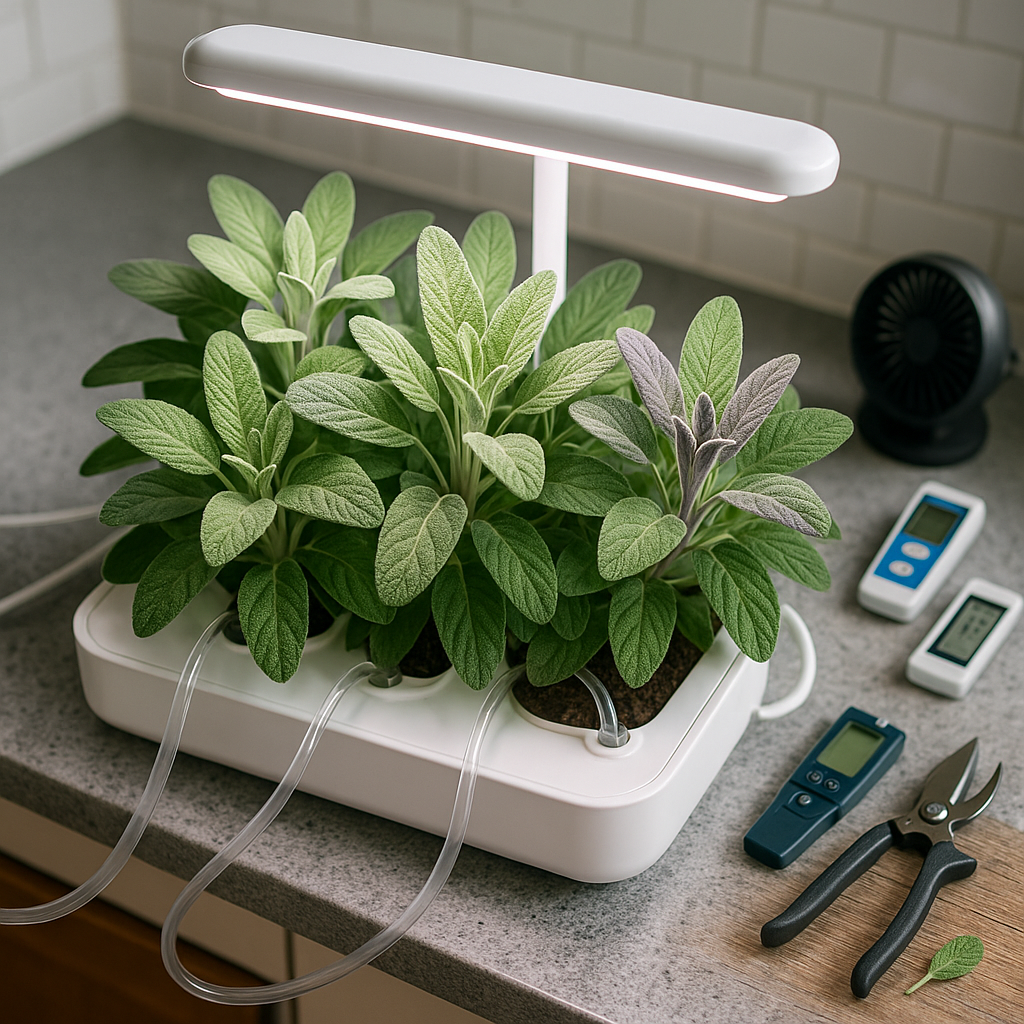Introduction to Hydroponic Sage
Yes, you absolutely can grow hydroponic sage, and it’s easier than you might think. Hydroponic sage offers a smart way to bring this flavorful herb into your kitchen—without the mess of soil or the worry of outdoor pests. By going soil-less, you save precious space, enjoy faster growth cycles, and harvest cleaner, more aromatic leaves every time.
For urban gardeners or anyone craving fresh herbs year-round, hydroponic sage is a game changer. Imagine snipping fragrant leaves for your meals directly from a compact, tidy hydroponic setup on your countertop or balcony.
In this post, we’ll dive into the basics of setting up your own hydroponic system for sage, walk you through the care essentials to keep your plants thriving, and highlight the benefits that make hydroponic sage so appealing. We’ll also cover the best ways to harvest for maximum flavor and ongoing growth, ensuring you always have a lush supply on hand.
Whether you’re a curious beginner or a gardening enthusiast looking to try something new, this guide will give you the confidence and know-how to start enjoying fresh hydroponic sage in no time.
Why Grow Sage in Hydroponics?

Growing sage hydroponically offers many advantages over traditional soil cultivation, making it an excellent choice for gardeners seeking efficiency and reliability. One major benefit is improved pest control—hydroponic systems keep sage off the ground and allow you to closely monitor plant health, reducing the chances of infestations and diseases that often affect soil-grown herbs.
Additionally, hydroponics supports year-round harvesting. Stable indoor environments and controlled lighting ensure your plants thrive no matter the season, so you can snip fresh sage for your dishes or remedies anytime. This makes hydroponically grown sage perfect for culinary uses such as seasoning roasts, infusing oils, or adding depth to soups and teas.
Its aromatic qualities also shine in homemade sachets or natural cleaning products, while many appreciate sage’s medicinal properties for soothing sore throats or aiding digestion.
Hydroponic systems use water and nutrients more efficiently than soil gardens, often resulting in faster growth and higher yields with less waste. By recirculating water and minimizing fertilizer runoff, hydroponics offers a more sustainable way to cultivate sage at home or commercially.
Ultimately, growing sage hydroponically delivers fresher flavor, year-round access, and a lighter environmental footprint.
Choosing Sage Varieties and Starting Your Seeds
When selecting sage varieties for hydroponic growing, start with those that thrive in compact settings and have robust flavors, such as common (garden) sage, dwarf sage, and purple sage. Garden sage is versatile and easy to manage, while dwarf sage is perfect for limited spaces and delivers excellent yields. Purple sage not only adds a unique color to your hydroponic garden but is also hardy and aromatic.
For starting from seeds, use sterile, high-quality seed-starting media such as rockwool cubes or coco coir plugs to ensure good drainage and minimize disease risk. Moisten the media before sowing seeds, plant them just below the surface, and keep them warm—ideally around 70°F (21°C)—and lightly covered to promote germination. Use a humidity dome or occasionally mist with water to prevent seeds from drying out, and consider using a gentle grow light to encourage steady growth from the start.
Alternatively, if you have access to a healthy sage plant, propagation from cuttings is faster and often results in a more resilient hydroponic plant. Simply cut a 4-inch stem, remove the lower leaves, and root it in water or a hydroponic starter plug until strong roots form before transferring it to your main system. Both methods can set you up for a lush, productive sage harvest in your hydroponic setup.
Setting Up Your Hydroponic Sage System

Getting started with hydroponic sage is easier than you might think, especially if you choose beginner-friendly systems like Nutrient Film Technique (NFT) or Deep Water Culture (DWC). NFT systems use a shallow stream of nutrient solution, which is perfect for fast-growing herbs like sage because it ensures the roots get oxygen and nutrients with minimal fuss. DWC, on the other hand, suspends sage roots directly in a well-oxygenated solution, making setup and upkeep simple for new hydroponic gardeners.
For the best growth, place your sage under full-spectrum LED grow lights for 12–16 hours a day to mimic sunlight. Keep temperatures between 65–75°F (18–24°C) and maintain humidity levels around 40–60%. Sage thrives in a slightly acidic environment, so monitor your nutrient solution’s pH and aim for a range between 5.5 and 6.5; this ensures the plant can absorb nutrients efficiently.
Use a balanced hydroponic nutrient mix tailored for leafy herbs—look for key elements like nitrogen, potassium, calcium, and magnesium—and keep the electrical conductivity (EC) within 1.2–1.8 to avoid over- or under-fertilizing. Regularly check and change your water every two weeks to prevent mineral buildup and algae growth.
Don’t forget to clean system parts like pumps and tubing, as blockages can stunt plant growth. Daily monitoring of water levels, pH, and EC with inexpensive meters makes maintenance quick, ensuring your hydroponic sage stays vibrant and healthy.
Caring for Sage
Caring for hydroponic sage requires a mix of routine attention and timely interventions to keep your plants thriving. Check your sage daily for any visible issues—look for wilting, color changes, or signs of pests. Prune away dead or leggy stems to encourage healthy, bushy growth.
Weekly Care
Each week, gently inspect the roots for signs of rot or browning, rinsing them if needed to promote aeration. Adjust your nutrient solution accordingly; sage prefers a moderately balanced mix. Stay alert for nutrient deficiencies:
- Pale leaves may indicate a nitrogen shortage.
- Purple tints can signal phosphorus deficiency.
- Yellowing along veins might point to magnesium deficiency.
These issues can be corrected by adjusting your hydroponic nutrient blend or adding supplements as needed.
Pest and Disease Prevention
To prevent pests like aphids or spider mites, keep your hydroponic area clean and use filtered water. If growing indoors, consider introducing natural predators like ladybugs. For disease prevention, ensure proper airflow with a fan and avoid excess humidity, which can lead to fungal or root problems.
Light and Water Management
If your sage grows leggy, it’s likely stretching for more light. Consider increasing light intensity or adjusting the plant’s placement. Yellowing leaves often indicate overwatering or nutrient imbalances—flush the system and reset with a balanced solution.
Additional Tips
For stunted growth, check for rootbound conditions in net pots, salt buildup in the growing medium, and pH drift. Maintaining a pH between 5.5 and 6.5 is ideal. Consistent monitoring and quick adjustments are key to success with hydroponic sage.
Harvesting, Storing, and Using Hydroponic Sage
The best time to harvest hydroponic sage is just before it flowers, when the oils—and therefore the flavor—are most concentrated. Snip stems in the morning after the dew has dried but before the sun gets too hot to help preserve the essential oils. Use sharp, clean scissors to cut just above a leaf node, which encourages bushier regrowth for future harvests.
To store fresh sage, wrap the sprigs in a damp paper towel, place them in a sealed bag, and keep them in the refrigerator for up to a week. For longer storage, air-dry small bundles upside down in a cool, dark place until the leaves are crisp. Then crumble them and store in airtight containers away from sunlight.
You can also freeze whole leaves by laying them in a single layer on a baking sheet, then transferring them to freezer bags for up to six months. This method does a great job preserving fresh flavor.
Sage is a culinary favorite: add its earthy aroma to roasted chicken, soups, and pasta sauces, or infuse it into butter for a flavorful topping. Beyond the kitchen, dried sage is often used in home remedies like soothing teas for sore throats or in homemade crafts such as fragrant sachets and natural cleaning sprays.
Final Tips and Common Questions
To get the most out of your hydroponic sage, focus on consistency—keep your lighting schedule steady, use a well-balanced nutrient solution, and make sure your water stays clean and oxygenated. For bigger yields and bolder flavors, prune your sage regularly; snipping the tops encourages bushier growth and more leaves.
Aim to prune lightly every 2-3 weeks, but never remove more than a third of the plant at once. Many beginners ask how long a hydroponic sage plant can live—while traditional potted sage may last a couple of years, hydroponic sage can thrive for 3-5 years if the roots stay healthy and free of disease.
Wondering about taste? Experiment with nutrient levels and lighting durations—even small adjustments can make leaves more aromatic or savory. Track your changes in a simple journal or use an app, noting everything from pH tweaks to harvest sizes. This way, you’ll discover what works best in your setup while continually improving both yield and flavor.
Don’t be afraid to try new things—your best sage harvest might be just one tweak away!
